Automobile Magazine: Saving Preston’s Tucker
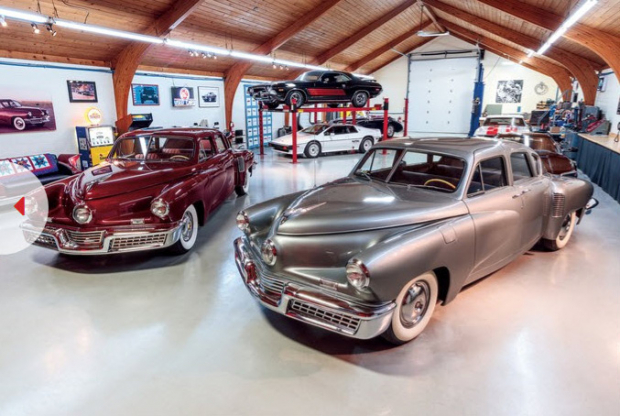
Automobile Magazine has posted a wonderful article on Tucker 1029, formerly owned by Preston Tucker and now owned by Mark Lieberman, the previous owner of my Tucker 1044.
The article also provides insight into the upcoming celebration of Tuckers at the 2018 Pebble Beach Concours d'Elegance.
Enjoy,
Howard Kroplick
Saving Preston’s Tucker
70 years after it was built, Preston Tucker’s personal car has found its sanctuary
By: Rory Jurnecka | Photography by: William Walker June 18, 2018
What would Preston Tucker think of the silver-gray-green Tucker 48 sitting in the showroom of Nostalgic Motoring Ltd.? The car, chassis No. 1029 (the 29th of 51 built and just 47 survivors), was an integral part of his life between 1948, when he first drove it off the assembly line, and 1955, shortly before his death from lung cancer. This exact car was Tucker’s personal vehicle, spending most of its time in Ypsilanti, Michigan, where Tucker’s home, family, and machine shop were all located, some 250 miles east of the Tucker Corporation’s Chicago factory.
Roughly 2,000 employees, including a staggering 250 engineers, toiled in the factory day and night, never quite keeping up with Tucker’s expectations for his fledgling and ultimately ill-fated venture to produce an advanced vehicle the industry giants in Detroit would never understand. He was on a quest to prove good enough was wholly inadequate, and he never thought to ask why such a car couldn’t be built. That’s a philosophy that jibes with chassis 29’s present owner, Mark Lieberman, who paid $1,792,500 for not just the privilege of calling Tucker’s car his own for a time but also the honor of returning the machine to its former glory.
Lieberman founded Nostalgic Motoring, a collector car sales and restoration shop, 23 years ago. In 2009, it moved into a former church, the so-called “Car Sanctuary” tucked off a side road down the street from SRT’s headquarters in Auburn Hills, Michigan. When he was 12, Lieberman started fixing mopeds for spending money, and at 13 he started his first business. By his mid-20s he was a plastics recycling mogul, having jumped in headfirst on a chance opportunity to recycle engineered thermoplastics—industrial plastic waste produced by the automotive industry. At the time, no one was able to recycle the material, but Lieberman’s naivety would ultimately power his success. It’s easy to draw a parallel between him and Tucker. “I didn’t know that couldn’t be done,” Lieberman says of his plastics business, founded in 1985 and sold in 2007. “That’s why I did it.”
Whereas Tucker was not successful with his venture, Lieberman, a lifelong car fanatic, was. The proceeds from selling the plastics business enabled Lieberman “the financial ability to just play with cars,” as he puts it. He has become one of the world’s foremost Tucker authorities, and through his knowledge of developing plastic and rubber compounds, he has reproduced many items original to the Tucker 48, including the car’s failure-prone tubular, rubber-filled Torsilastic suspension components. That’s a fault Tucker’s former car has; although it looks perfectly drivable with its lustrous paint and shiny chrome, the collapsed front suspension has a temporary fix to give it the proper stance for photographs, Lieberman says.
“I spent a lot of money and a lot of time making a system that worked,” he recalls. “Before then, you’d have people putting coil-overs and welding all manner of contraptions in these cars to suspend them because they were all collapsed. I’m still the only guy on the planet that makes this stuff. We can make cars ride like they were supposed to in ’48.”
This is the fifth Tucker Lieberman has owned. He bought his first one out of a barn in dire condition in 1991, restored it, and held on to it for 15 years. The tall, lanky native Michigan resident reels off chassis numbers and details of specific cars like a baseball historian reciting statistics. His enthusiasm is infectious, and even he seems to be amazed by the knowledge he shares with others, as if he is hearing the stories himself for the first time.
When it comes to No. 29, Lieberman can talk nearly nonstop for as long as you like. He tells us that in its early days, it was used for speed testing at Indianapolis Motor Speedway and also demonstrated the capability of Tucker vehicles in a promotional film.
There’s patina everywhere on No. 29, Preston Tucker’s personal car. The cracked instrument surround will be replaced with one of Mark Lieberman’s reproductions.
Before he died, Tucker sold the car to Winthrop Rockefeller, an heir to the Rockefeller fortune, who drove it daily while serving as governor of Arkansas. From there it passed through several hands, including those of singer James Brown’s manager, and was featured prominently in “Tucker: The Man and His Dream,” a 1988 movie directed by Francis Ford Coppola. Then it entered a static private collection and was generally unloved and unused for the better part of a decade. When the car popped up at RM Sotheby’s Scottsdale auction in January, Lieberman pounced.
“As I worked my way through early cars and late cars, what’s the next thing to do? I want Preston’s car,” Lieberman says. “From a technical standpoint, it’s kind of unique, but from a significance and historical standpoint, it’s kind of huge.”
Indeed, No. 29 has several features Tucker himself had added to not just this car but also Tuckers Nos. 30 and 31—both cars owned originally by his family. Among these is the hollow ringlike shift-lever center, which was a solid disc on standard Tuckers. Tucker evidently found shifting with a finger slipped through the center was more comfortable to him. He also added additional support to the rear suspension for greater stability and a Babcock water heater to combat frigid Michigan winters.
“When cars came in for service, they’d take the engine out, slap a good one in, and you’d drive away, then return to have the other engine put back when it was serviced.”
Inside, No. 29 presents like the 20,000-mile car it is. There’s a crack on the plastic speedometer surround, but Lieberman reproduces those, too. The interior upholstery was redone, but the original stuff miraculously resides just underneath. Ultimately, Lieberman will fully restore No. 29, and there are plenty of clues to help him do it the right way.
“My focus is going to be on getting this car to be as correct and as original as it was when Preston took it for the first time out of the factory,” Lieberman says. “Underneath the original upholstery and glove box is original paint, and it’s preserved—it hasn’t been degraded by heat or sun. That should be a spot-on point to match color from. We remanufacture all the rubber, so the sill plates and all that will be fresh and manufactured to the original blueprints.”
With Lieberman’s resources and knowledge, a Tucker restoration seems like it should be easy, but there’s a lot of hard manual labor and a ton of research put into the process.
“For the last several years I’ve been the director of the Tucker club archives, and I have access to all the files and data,” Lieberman says. “Being able to use the blueprints is key to making this all correct and original. We’re going to preserve areas of spot welds and construction that was practiced at the time. These cars have an enormous amount of lead [filler] in them; I got 300 pounds of lead off of car No. 6. The cars are sculpted. You can’t take the door off one and put it on another. It’s not going to fit.”
Lieberman is reluctant to drive the vehicle in its present state. Besides the suspension, the ancient, “crispy” wiring is a fire hazard threatening to erase the car from history. Instead, we turn to No. 46, a fully restored example in Lieberman’s custody. The car is on consignment for sale, but it will also be featured at the Pebble Beach Concours d’Elegance in August as part of a special Tucker class.
As with all Tuckers, No. 46 has its own unique and interesting story. Once it was part of the Fabulous Tuckers Exhibit, a traveling Tucker fair and carnival show run by a man named Nick Jenin. Later, 46’s body was dropped onto an Oldsmobile chassis and converted to front-mounted Rocket V-8 power with an automatic transmission for Jenin’s daughter. A Mercury dealership owner then repeated the process with a Mercury chassis and engine. Ultimately, 46 was treated to a full restoration, with a correct Tucker-modified Franklin 334-cubic-inch aviation engine back in place in the rear of the car. It’s not the same engine it left the factory with, which isn’t uncommon, according to Lieberman.
“More than half of the Tuckers don’t have their original engine since they were designed to be a quick-change engine,” he says. “When cars came in for service, they’d take the engine out, slap a good one in, and you’d drive away, then return to have the other engine put back when it was serviced.” Apparently more than a few original motors were never reinstalled before Tucker Corporation disbanded.
Either way, the Tucker has massive road presence on the small, winding lanes of Auburn Hills. “It’s like a massively giant 356 Porsche,” Lieberman says. “A little ass-heavy, but it has a light front end and handles well with the right suspension. It doesn’t have a lot of body roll, stays relatively flat, and you can pretty much turn the wheel with two fingers.”
No. 46 lived a long and storied life, but it’s back to its original configuration in time for the 2018 Pebble Beach Concours d’Elegance in August.
Later, back inside the church-turned-shop, I climb behind No. 29’s wheel and look over the broad hood. The thin plastic steering wheel is huge, which is also exactly how the car feels when you’re planted inside. Lieberman grins. But will he keep No. 29 when its restoration is finished?
“I kind of adopted the philosophy that my station with Tucker is to get them, bring them back to the way they’re supposed to be, pass them on to the next conservator, and go grab another one,” he says in a somewhat somber tone. “Will I have this one forever? Forever’s a long time.”
Tuckers on the Green
This year’s Pebble Beach Concours d’Elegance will feature a special class to celebrate the Tucker 48, 70 years after the vehicle went into production. Mark Lieberman will be a class judge, and pre-eminent automotive journalist and historian Ken Gross will be the chief class judge.
“We’re going to have the Tin Goose, a bare Tucker chassis, and eight or nine other Tuckers,” Gross says. “Most people have perhaps only seen one Tucker, not a big gathering of these unusual-looking cars. It’ll be memorable. Lots of people applied and wanted to bring their cars. I regret we just couldn’t accommodate them all.”
This year also marks the 30th anniversary of “Tucker: The Man and His Dream,” which did its part to instill a certain perception of the Tucker story upon the world.
“Francis Coppola’s movie dramatized the Tucker story, some 40 years after Tucker failed—and that’s what people remember,” Gross says. “The scene where the workers assemble a bunch of Tuckers and drive them to the courthouse to show the judge that Tucker was the real deal brings tears to people’s eyes—and we hope to line up ‘our’ Tuckers across the ramp to replicate that moment.”
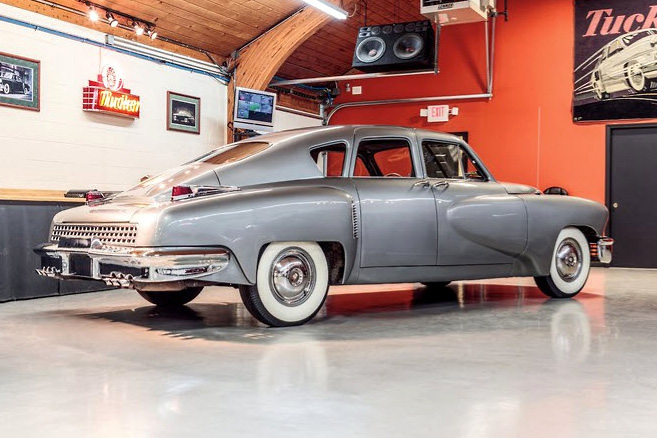
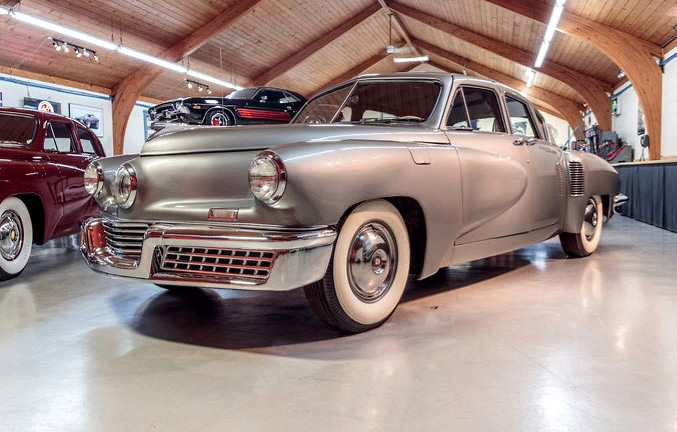
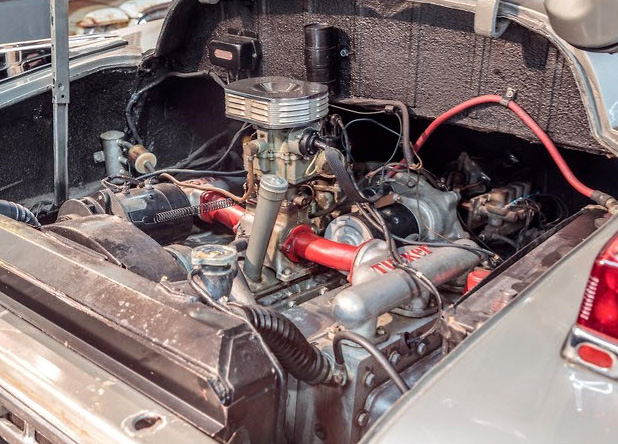
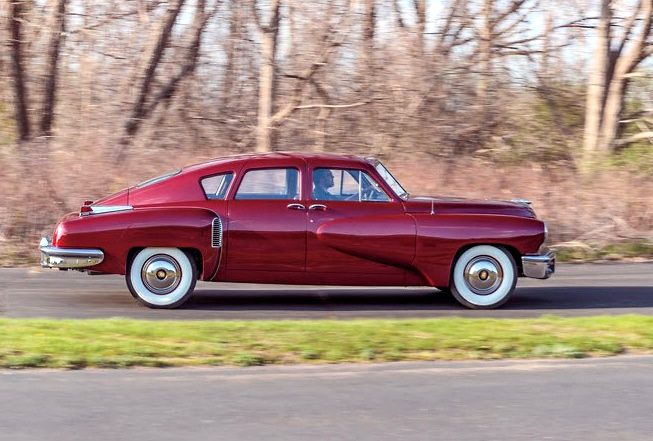
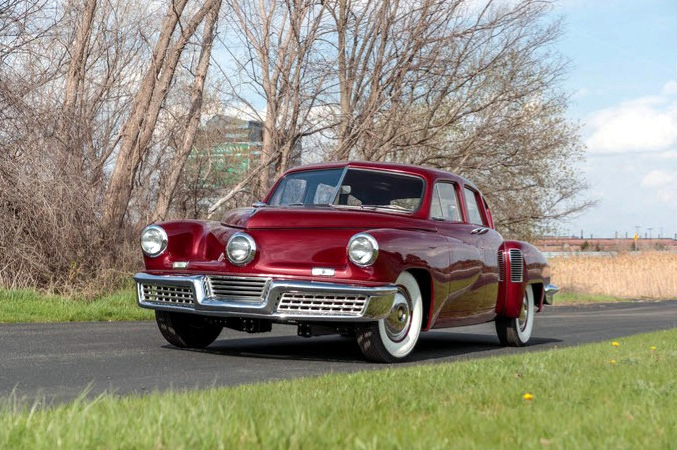
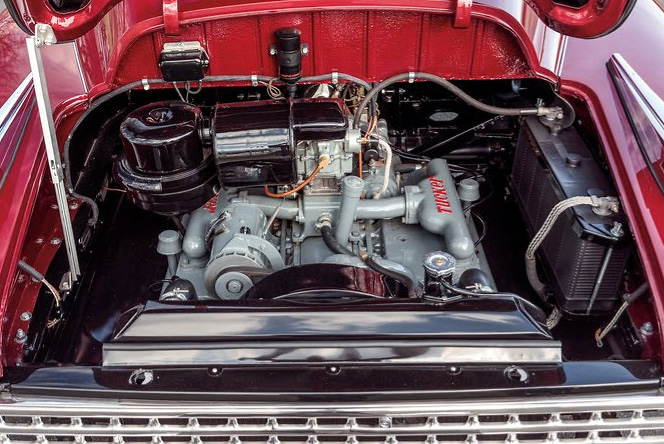
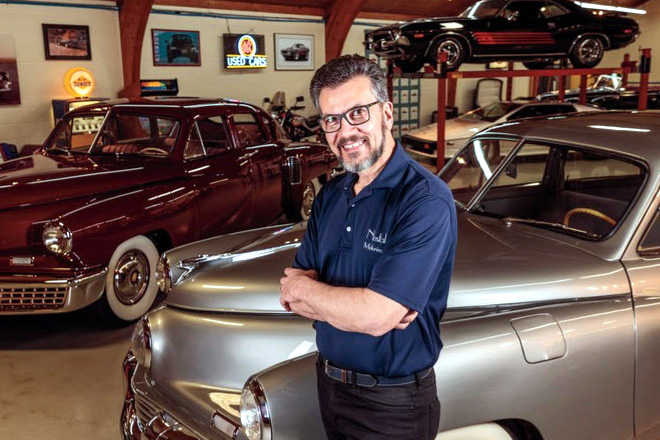

Comments
Howard very interesting article. If you have time, please post an update on the progress with your car. I can’t imagine how exciting it must be getting a car ready for Pebble Beach. I’d also love to participate in a car show or event honoring the 110th anniversary of the Vanderbilt Cup Races.